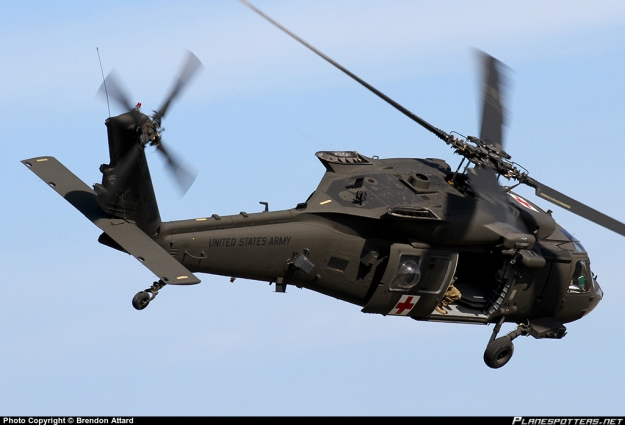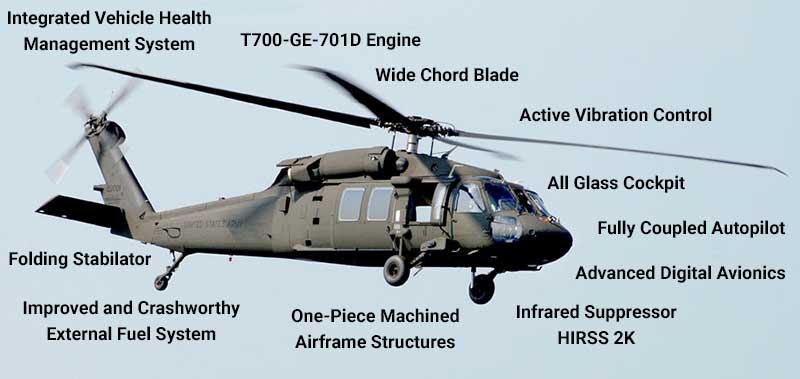Understanding the Mechanics and Design Behind Uh 60 Helicopters
The UH-60 helicopter, generally called the Black Hawk, stands as a peak of modern rotorcraft innovation, personifying a blend of robust design and intricate auto mechanics. From its beginning to its current iterations, the advancement of this airplane showcases a combination of development and usefulness. As we peel back the layers of the UH-60's layout, a globe of complex systems and careful engineering comes to light. Comprehending the technicians and design behind this versatile airplane reveals a realm where accuracy fulfills power, and where each part plays an essential function in accomplishing trip.
History of UH-60 Helicopters
The background of UH-60 helicopters traces back to the late 1970s when the USA Military looked for a functional and sophisticated utility helicopter to change its aging fleet. In action to this requirement, the Sikorsky Airplane Firm established the UH-60 Black Hawk helicopter. Presented in 1979, the UH-60 quickly came to be a staple in armed forces operations due to its impressive capacities.
The UH-60 was created to stand out in a selection of goals, including troop transportation, medical evacuation, electronic warfare, and unique operations. Its capacity to adjust to different roles made it an important property to the U.S. uh 60. Army and various other military pressures worldwide
For many years, the UH-60 system has undertaken several upgrades and variants to enhance its efficiency and maintain pace with progressing mission needs. These helicopters have actually seen considerable service in problems such as the Gulf War, Afghanistan, and Iraq, showcasing their integrity and flexibility in diverse operational settings. The UH-60's rich history is a testament to its enduring legacy as a top utility helicopter.

Engine and Power Systems
Utilizing advanced propulsion modern technology, UH-60 helicopters are furnished with sophisticated engine and power systems to ensure optimum performance and dependability in a variety of operational scenarios. The UH-60, commonly recognized as the Black Hawk, is powered by 2 General Electric T700-GE-701D engines, each qualified of providing up to 1,940 shaft horsepower. These turboshaft engines provide the essential thrust for the helicopter to execute its missions effectively, consisting of army transport, clinical evacuation, and combat assistance.

Rotor System and Aerodynamics
How do the rotor system and aerodynamics of UH-60 helicopters contribute to their operational efficiency and flight capabilities? The blades Recommended Site system of the UH-60 helicopter plays an important function in offering lift and propulsion. The UH-60 features a four-bladed, fully articulated blades system that permits high maneuverability and security throughout trip. This style allows the helicopter to carry out a variety of objectives, from transport and clinical evacuation to deal with procedures.
The rules of aerodynamics additionally play a crucial function in the efficiency of UH-60 helicopters. The structured fuselage and rotor blade layout minimize drag, enabling the helicopter to achieve greater speeds and far better gas effectiveness. The aerodynamic layout of the UH-60 likewise adds to its capacity to operate in varied environmental conditions, consisting of high altitudes and hot temperature levels.
Avionics and Flight Control Solution

In its elaborate control with the blades system and aerodynamics of UH-60 helicopters, the avionics and flight control systems develop a crucial network of innovations forming the airplane's functional capabilities. In the UH-60, these systems include digital screens, interaction radios, General practitioner navigation, weather condition radar, and auto-pilot systems.
The trip control systems of the UH-60 are accountable for translating the pilot's inputs into the suitable changes to the blades system, guaranteeing stable flight and ability to move. These systems include hydraulic actuators, servos, and computer systems that function with each other to regulate the tail and main rotors, as well as other flight control surfaces. By specifically managing the helicopter's flight dynamics, these systems enable pilots to perform a wide variety of missions, from transport and search-and-rescue to fight operations, with precision and confidence.
Function and Applications in Air Travel
The role and applications of avionics and trip control systems in aeronautics are integral to ensuring the secure and effective operation of aircraft, including UH-60 helicopters. Avionics systems in UH-60 helicopters include a series of digital systems that home help in navigation, communication, surveillance, and regulating numerous airplane functions. These systems include electronic screens, auto-pilot systems, communication radios, GPS navigation devices, see this here and weather condition radar. Flight control systems play a vital function in navigating the helicopter in the air, keeping security, and guaranteeing accurate movements. The fly-by-wire technology made use of in contemporary UH-60 helicopters translates pilot inputs right into electronic signals, which are after that translated by the flight control computer systems to change the aircraft's control surface areas. Additionally, these systems include security features such as auto-pilot modes, surface understanding advising systems, and stability enhancement systems to improve the overall safety and security and operational abilities of the UH-60 helicopters in various goals, including army transport, clinical evacuation, search and rescue, and airborne firefighting.
Verdict
In conclusion, the UH-60 helicopter is a flexible airplane with an abundant background and progressed engineering. Its engine and power systems, blades system, aerodynamics, avionics, and flight control systems all work together to make it a effective and reliable machine.
In its complex control with the blades system and the rules of aerodynamics of UH-60 helicopters, the avionics and trip control systems develop a critical network of modern technologies forming the airplane's operational abilities.The flight control systems of the UH-60 are responsible for converting the pilot's inputs right into the suitable modifications to the rotor system, guaranteeing stable flight and ability to move. Avionics systems in UH-60 helicopters encompass a range of electronic systems that aid in navigation, interaction, tracking, and controlling various airplane functions. Additionally, these systems incorporate safety and security functions such as autopilot settings, surface awareness warning systems, and security augmentation systems to enhance the total safety and security and functional capabilities of the UH-60 helicopters in numerous objectives, including troop transport, clinical emptying, search and rescue, and aerial firefighting.
Its engine and power systems, blades system, aerodynamics, avionics, and trip control systems all work with each other to make it a reliable and reliable maker.